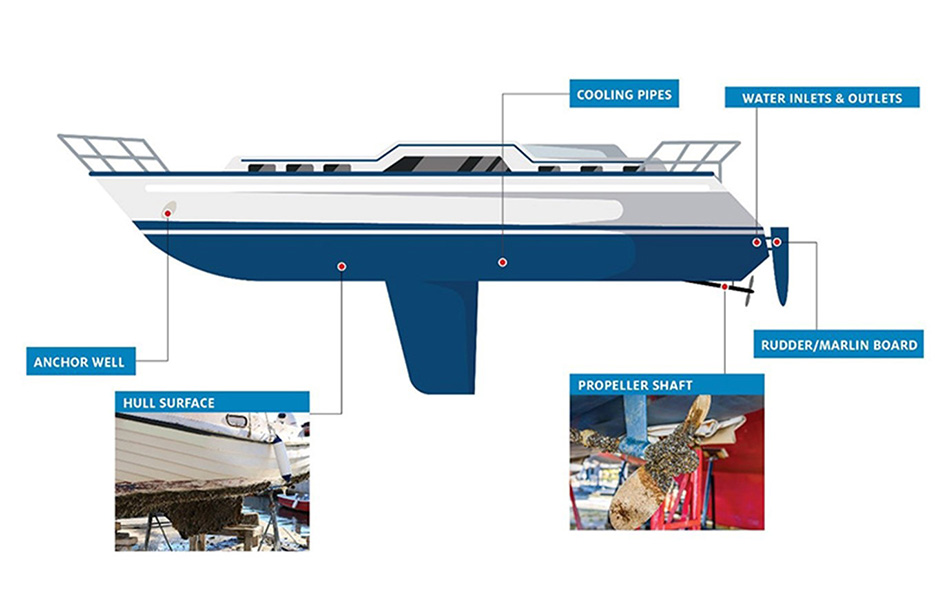Non-commercial vessels arriving in Australian territorial seas must submit a pre-arrival report (PAR), which includes questions on biofouling management. The PAR responses help us manage biosecurity risks associated with biofouling on non-commercial vessels.
Biosecurity officers assess the level of biosecurity risk associated with non-commercial vessel biofouling on arrival and may take necessary actions to address these risks.
Help reduce the risk of biofouling
Refer to the International Maritime Organization’s guidance on biofouling management for recreational boating for information about how you can help protect against the risks of biofouling on your vessel.
High risk areas to target on your vessel
These areas are risks for biofouling on yachts:
- Ancillary gear - Routine maintenance is recommended for all ancillary gear in contact with sea water as biofouling can build up during extended port stays.
- Internal Water System – Seawater is drawn into yachts in internal water systems such as engine cooling, toilet flushing and galley sinks. Port environments can provide the opportunity for marine species to enter internal seawater systems. Regular inspection and maintenance is recommended.
- Underwater hull areas – Prolonged exposure to seawater means the hull poses the greatest risk from biofouling. Correct application and regular maintenance of antifouling paint is highly recommended to prevent build-up of biofouling.
Proactive biofouling management options
From April 2026, non-commercial vessel owners and operators can choose to proactively manage their biofouling using one of 3 approved options.
- Option 1: Implementation of a biofouling management plan
- Option 2: Cleaned all biofouling prior to arriving in Australian territory
- Option 3: Alternative biofouling management method.
Vessel owners who proactively manage their biofouling will be subject to less intervention on arrival.
The details for all options will be published in a guidance document: Australia’s biofouling management requirements for non-commercial vessels. This document will be published here before April 2026. It will set out what you will need to provide for each option. Keep an eye out for changes.
A 12-month education period will begin in April 2026.
More information
Visit the boat owners page for more on how you can help prevent the spread of pests and diseases in our waterways.
View a report on a national survey on recreational boat maintenance practices.

